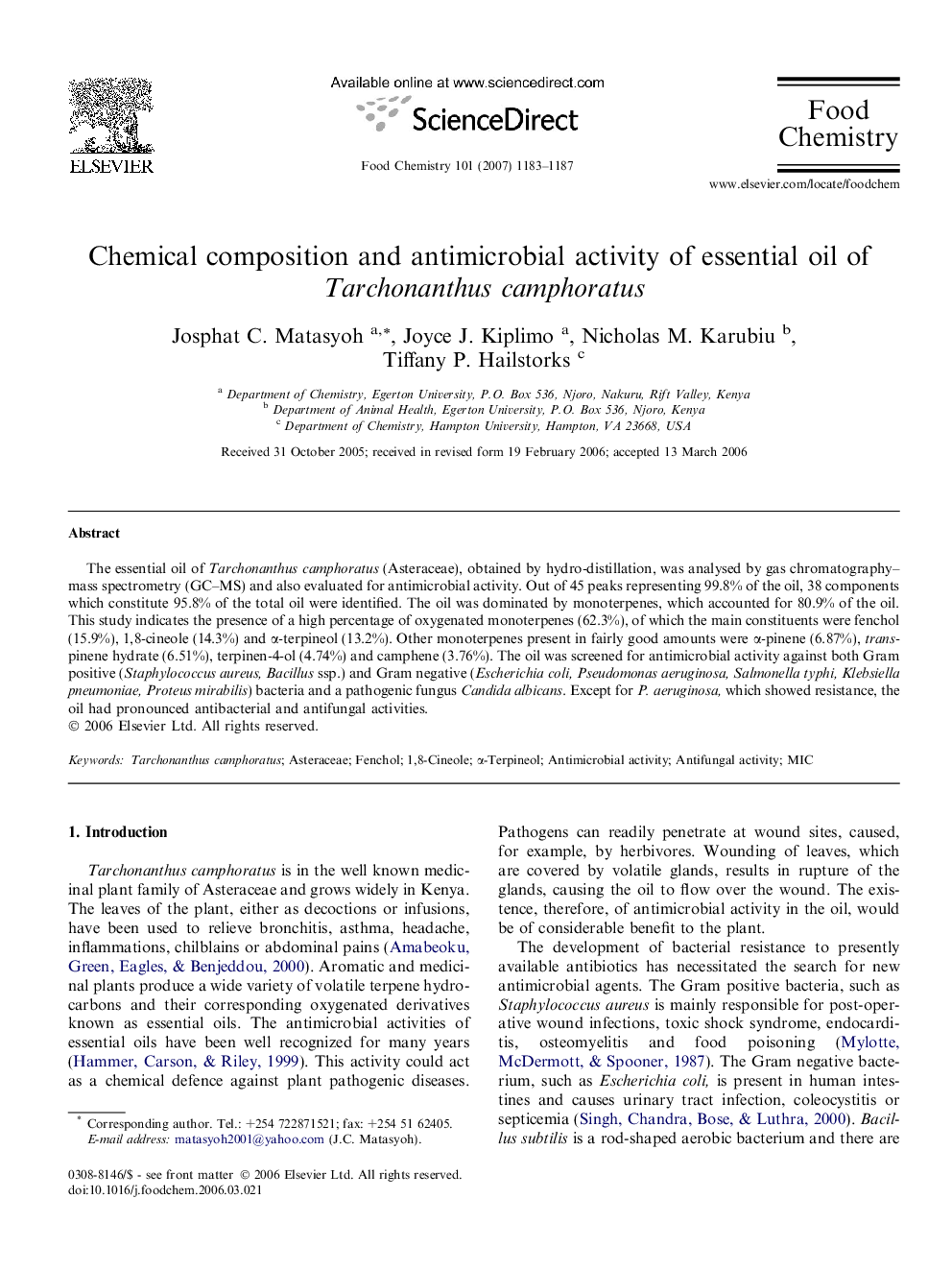| Article ID | Journal | Published Year | Pages | File Type |
|---|---|---|---|---|
| 1191845 | Food Chemistry | 2007 | 5 Pages |
The essential oil of Tarchonanthus camphoratus (Asteraceae), obtained by hydro-distillation, was analysed by gas chromatography–mass spectrometry (GC–MS) and also evaluated for antimicrobial activity. Out of 45 peaks representing 99.8% of the oil, 38 components which constitute 95.8% of the total oil were identified. The oil was dominated by monoterpenes, which accounted for 80.9% of the oil. This study indicates the presence of a high percentage of oxygenated monoterpenes (62.3%), of which the main constituents were fenchol (15.9%), 1,8-cineole (14.3%) and α-terpineol (13.2%). Other monoterpenes present in fairly good amounts were α-pinene (6.87%), trans-pinene hydrate (6.51%), terpinen-4-ol (4.74%) and camphene (3.76%). The oil was screened for antimicrobial activity against both Gram positive (Staphylococcus aureus, Bacillus ssp.) and Gram negative (Escherichia coli, Pseudomonas aeruginosa, Salmonella typhi, Klebsiella pneumoniae, Proteus mirabilis) bacteria and a pathogenic fungus Candida albicans. Except for P. aeruginosa, which showed resistance, the oil had pronounced antibacterial and antifungal activities.
